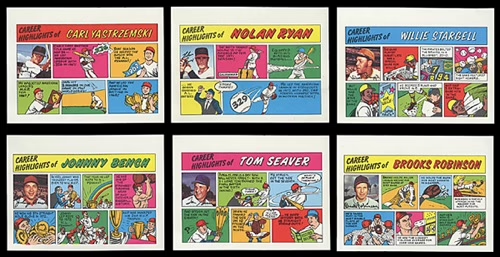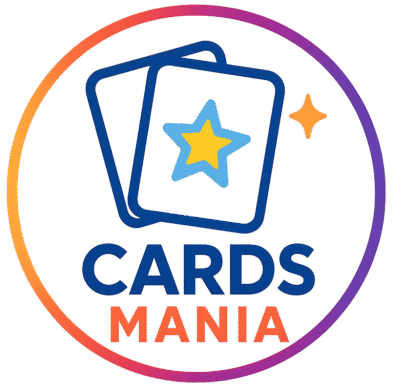The Lost Topps Sets That Never Hit Shelves
Every collector has heard about iconic sets like 1952 Topps Baseball or 1986 Topps Football, but few know about the mysterious lost Topps sets that never reached stores. These are the ones that nearly made it into wax packs but vanished before release. Some exist only as uncut sheets or test prints, others as rumors confirmed years later when a dusty vault or estate box opened. They are the ghost stories of the trading card world, and every collector secretly hopes to find one hiding in a random lot.

What exactly is a lost Topps set
Lost sets are Topps products that were designed and printed in limited quantities for internal testing or regional trials, but were never distributed nationally. They often include full card designs, checklists, and even wrapper art. A few copies escaped the factory and now circulate among high-end collectors. Because they were never official releases, they sit in a gray zone between prototype, promo, and legend.
1961 Topps Dice Game Baseball: a forgotten experiment in gameplay
In 1961, Topps tested a new concept: a baseball card set that doubled as a tabletop dice game. Each card featured a player portrait and stats that could be used in simulated games. The idea was creative but confusing for the average kid ripping packs. Only a handful of cards were printed, and the set was scrapped before release. For decades, collectors debated whether the cards even existed until a few surfaced in private hands.
The hobby went wild in 2018 when an uncut sheet surfaced at auction, confirming the full lineup of 18 players including legends like Mickey Mantle and Willie Mays. It was the hobby equivalent of discovering lost film footage from a famous director. Today, single cards are nearly impossible to find, and even partial sheets sell for thousands.
What makes the 1961 Dice Game fascinating is that Topps had already produced the wildly successful 1960 and 1961 regular baseball sets. The dice concept showed they were willing to experiment, mixing cards with gaming decades before Pokémon or Magic existed. It was ahead of its time, and perhaps too weird for the era.
1968 Topps Basketball Test: the NBA set that never made tip-off
In the late 1960s, Topps was trying to re-enter the basketball market after Fleer’s brief run in 1961. They produced a 1968 Topps Basketball test set that included stars from the NBA and ABA. The design was classic late-60s Topps style, bright colors with simple action shots. But for reasons that remain unclear, the set never launched. Some speculate licensing issues with the NBA Players Association caused delays, while others think Topps simply was not ready for national distribution.
For years, collectors only heard rumors of the test issue until an uncut sheet surfaced in 2019, confirming the project’s existence. The sheet included future Hall of Famers like Wilt Chamberlain and Bill Russell, proving that Topps had assembled an all-star lineup ready for print. Seeing that sheet for the first time was like finding an alternate universe where Topps dominated basketball a full year before their famous 1969-70 set debuted.
Collectors today consider the 1968 test sheet one of the most important pre-production finds in basketball hobby history. It shows Topps experimenting, learning from past test issues, and planning its big comeback in basketball cards that would soon happen in 1969.
1973 Topps Comics: baseball cards meet Sunday funnies
By the early 1970s, Topps was not afraid to get creative. Between Wacky Packages and Bazooka inserts, they were already mixing humor and pop culture. The 1973 Topps Comics test set took that idea even further. Printed on wax paper similar to Bazooka comics, these were colorful mini comic strips featuring baseball’s biggest names like Hank Aaron, Willie Mays, and Tom Seaver. Each strip had short jokes, cartoon panels, and player facts aimed at kids collecting cards and chewing gum.
Only a few packs escaped the Topps factory, reportedly through employee samples and test markets. Complete sets surfaced decades later and were documented by PostWarCards.com and Sports Collectors Daily. The art style screams early 70s optimism, mixing baseball nostalgia with comic book charm. It is one of those sets that make you ask, „Why did not this become a thing?”
Unlike other test issues, the 1973 Comics feel finished. They have packaging, design, and player selection ready for retail. Yet, they never reached the shelves. That combination of „fully ready but never released” is what makes them so collectible today. A single uncut sheet can fetch over 10,000 dollars at auction, depending on condition.
Why collectors chase lost Topps sets
Lost sets combine two collector instincts: the thrill of the chase and the love of history. They tell us what could have been and give us a look inside Topps’ creative lab. Each discovery rewrites a tiny piece of hobby history. You can hold a 1961 Dice Game card and realize you are touching an experiment from an era when Topps was inventing modern card collecting as we know it.
They are also a reminder that the hobby has always been about risk and imagination. Before Chrome, before refractors, before numbered parallels, Topps was already playing with format, design, and storytelling. Every canceled set is a „what if” moment – and that is why collectors will always be obsessed with them.
Where to find them today
Unreleased Topps test issues show up occasionally in major auctions like Heritage, REA, and Goldin. Online marketplaces such as eBay list single cards, proof sheets, and rare inserts, though authentication is crucial. For collectors who like to research before bidding, reference guides on Amazon can help verify printing details and paper stock differences.
Final thoughts
In the hobby, every collector dreams of pulling a rare card from a pack. But finding a lost Topps card is something else entirely. It is holding a piece of what might have been, a physical „alternate history” of collecting. The 1961 Dice Game, 1968 Basketball test, and 1973 Comics remind us that sometimes the most interesting cards are the ones we were never supposed to see.


Dodaj komentarz